Affiliate links on Android Authority may earn us a commission. Learn more.
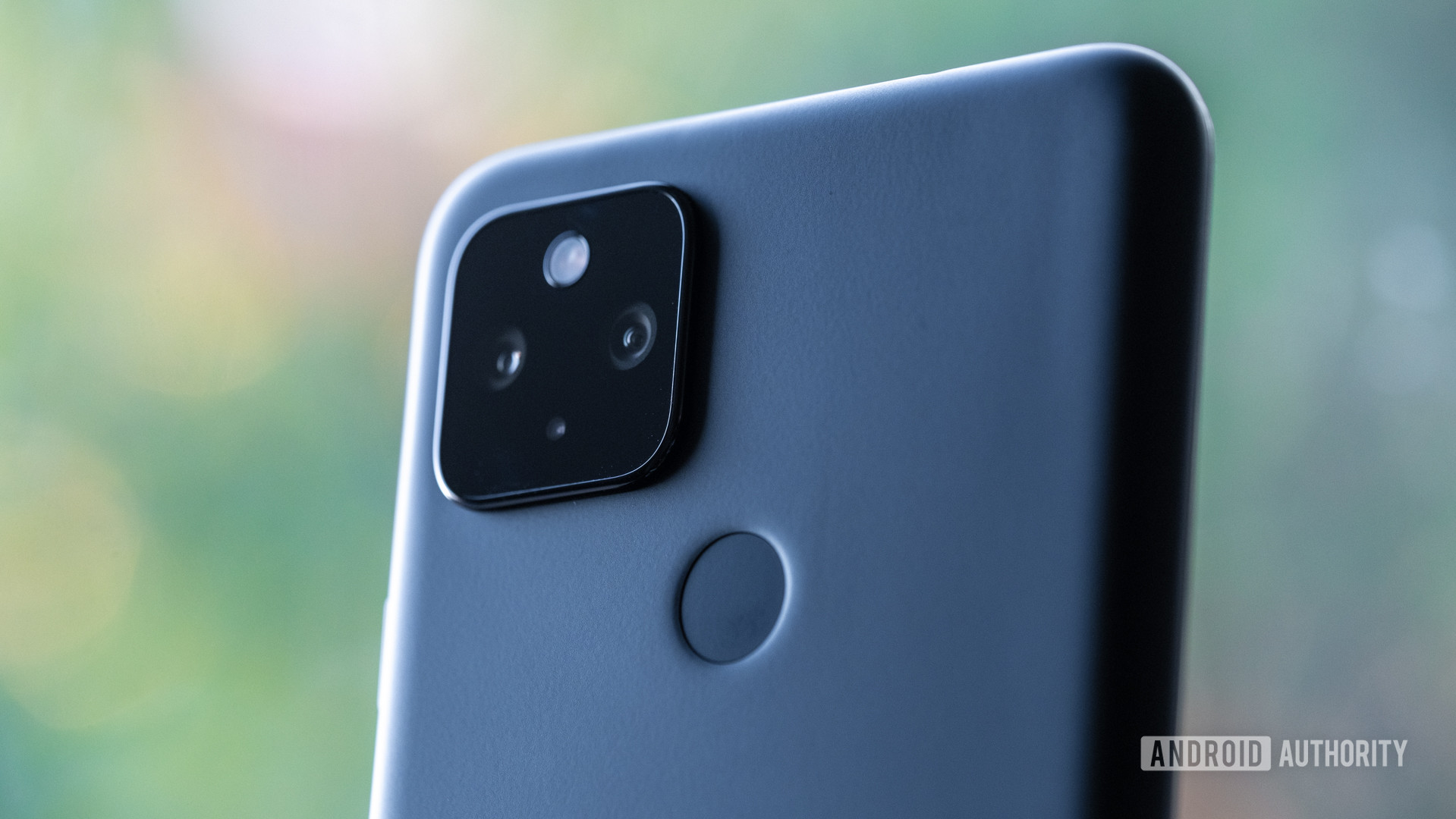

Google Pixel 4a 5G review: Perfectly balanced, as all Pixels should be
Published onNovember 13, 2021

Google Pixel 4a 5G
What we like
What we don't like
Our scores

Google Pixel 4a 5G
Branding is hard. Making any product stand out among a sea of competitors is a tough task, but in the oversaturated smartphone market that challenge is dialed up to 11. Enter the Google Pixel 4a 5G — the search giant’s 2020 offering in the increasingly competitive sub-$500 price tier.
Looking at the name, you’d be excused for thinking this is an iterative update on the Pixel 4a — Google’s endlessly delayed budget phone that finally dropped in August of this year. And while yes, the Pixel 4a 5G does feature support for next-generation data speeds, that barely tells half the story.
So, what is the Google Pixel 4a 5G? Simple. It’s one of the best mid-range phones Google ever made.
Update, November 2021: Updated with details of the Pixel 5a with 5G, Android 12 update, and the Pixel 4a 5G being retired from sale.
Design: It’s a Pixel alright
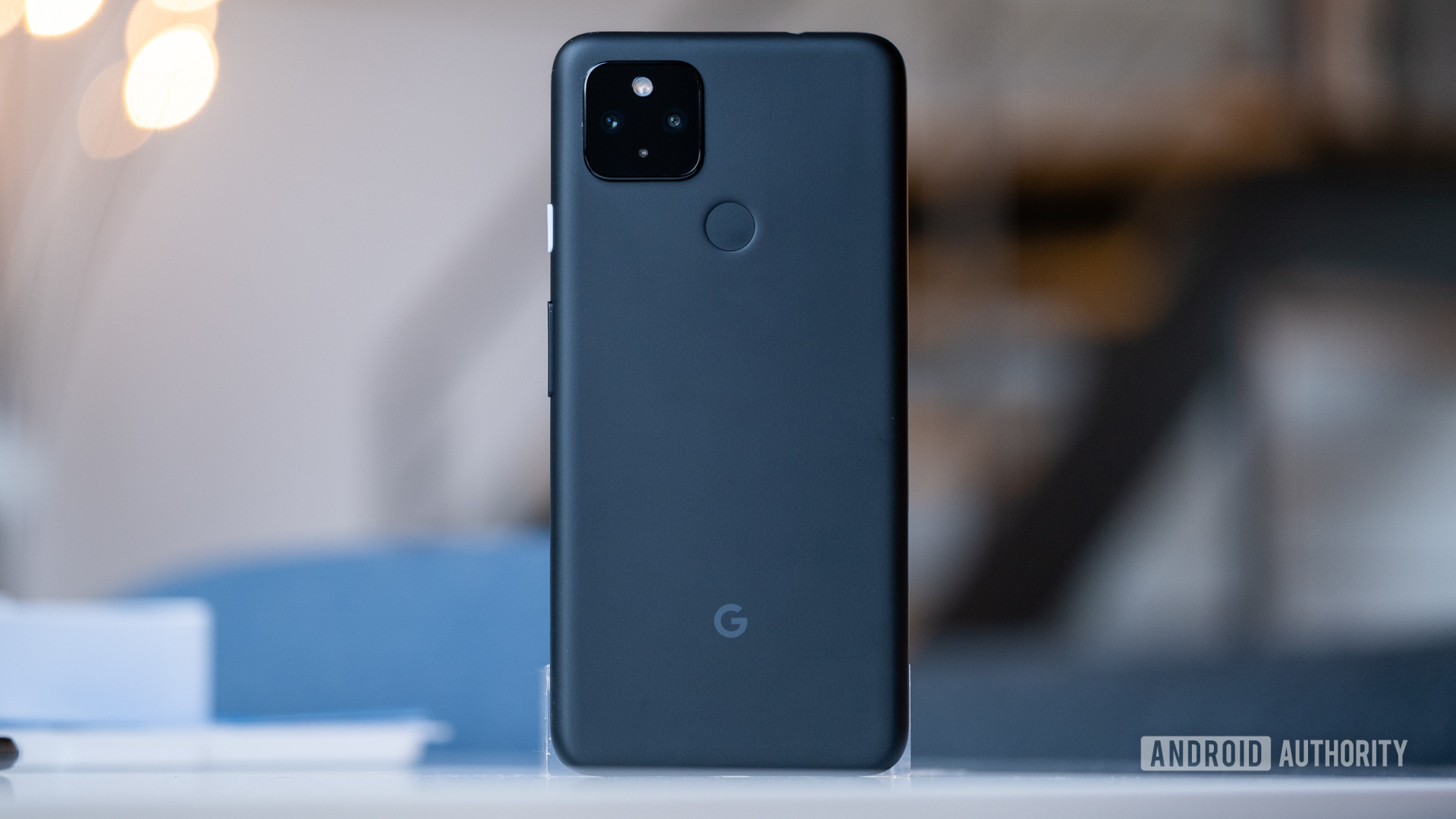
- Gorilla Glass 3 (front), matte polycarbonate (rear)
- 153.9 x 74 x 8.2mm
- 168g
- Rear-mounted fingerprint reader
- USB-C
- Stereo speakers
- Headphone jack
- Just Black, Clearly White (Verizon exclusive)
There are a surprising amount of areas where the Pixel 4a 5G cribs features and specs from its flagship sibling, the Pixel 5. However, aesthetically, the broader strokes owe a debt to its more immediate kin, the Pixel 4a.
Google has been toying around with different materials for its flagship line — switching from the Pixel 4’s glass to metal for the Pixel 5. The Pixel 4a opts for a simple all-polycarbonate unibody design instead. Google also made the smart decision to go with a matte finish that doesn’t really hide the plastic feel but it does prevent the 4a 5G from feeling cheap and toy-like. The power key and volume rocker are also both plastic, though they feel tactile and sturdy enough under pressure.
The added durability and lack of fingerprint smudges give it a couple of advantages over glass. The plastic body also ensures the Pixel 4a 5G is a lightweight phone. This is even true of the Verizon-exclusive model which is 3g heavier and 0.3mm thicker to account for the larger mmWave antennas.
The Pixel 4a 5G exudes that distinctly Google-y charm.
Instead of the two-tone look of older Pixel generations, the Pixel 4a 5G sticks with a singular shade. However, it retains the contrasting power button — a lilac purple on the Just Black model. Unfortunately, the Clearly White colorway is exclusive to Verizon’s variant. Poor show, Google.
The display is covered with the same Gorilla Glass 3 found on the Pixel 4a. Advancements in scratch and drop protection may have been minimal over the years, but this is still several generations behind the latest grade of Corning’s glass. Plus, other phones with similar MSRPs offer Gorilla Glass 5, so it’d be fair to expect some parity.
For security, Google stuck with the circular, rear fingerprint reader on the Pixel 4a. It’d be unfair to expect Pixel 4-like face recognition sensors at this price. It’s also hard to grumble when the reader on the Pixel 4a 5G is so speedy and accurate. Initially, I found the sensor a little small for my sausage fingers, but muscle memory soon kicked in and I very rarely had to stretch beyond a single unlock attempt.
Just above the fingerprint reader sits a square-shaped camera module that’s quickly becoming synonymous with Google’s smartphone design blueprint. It makes more sense here since unlike the Pixel 4a you’ve got a secondary camera, but we’ll come back to that later.
The most noteworthy design choice is the inclusion of a 3.5mm headphone jack. There’s also an excellent set of stereo speakers — one on the bottom, one in the earpiece — that are every bit as rich and loud as previous Pixel phones. Alongside the bottom-firing speaker, you’ll find a USB-C port, which still functions just fine with USB-C headphones. Combine these hardware elements with comprehensive HD codec support for Bluetooth music playback and you’ve got a phone that will delight audio purists on a budget.
I should also mention the haptics — they’re outstanding. This is nothing new for Pixels, but too many mid-tier phones skimp on vibration motors to cut costs.
Of course, Google did have to cut corners somewhere. The plastic build and aged Corning glass are two examples, but the biggest casualty over the Pixel 5, other flagship-grade phones is the lack of an IP rating. Make sure to keep it in your pocket in the rain. Notably, the Pixel 5a rectified this by adding an IP67 rating.
The Pixel 4a 5G’s design manages to strike a fair balance between budget and premium features, settling somewhere in the middle. Yet, it nudges ahead of many of its peers thanks to its outstanding haptics, a surprisingly complete audio suite, and some distinctly Google-y charm.
Display: A story of holes and hertz
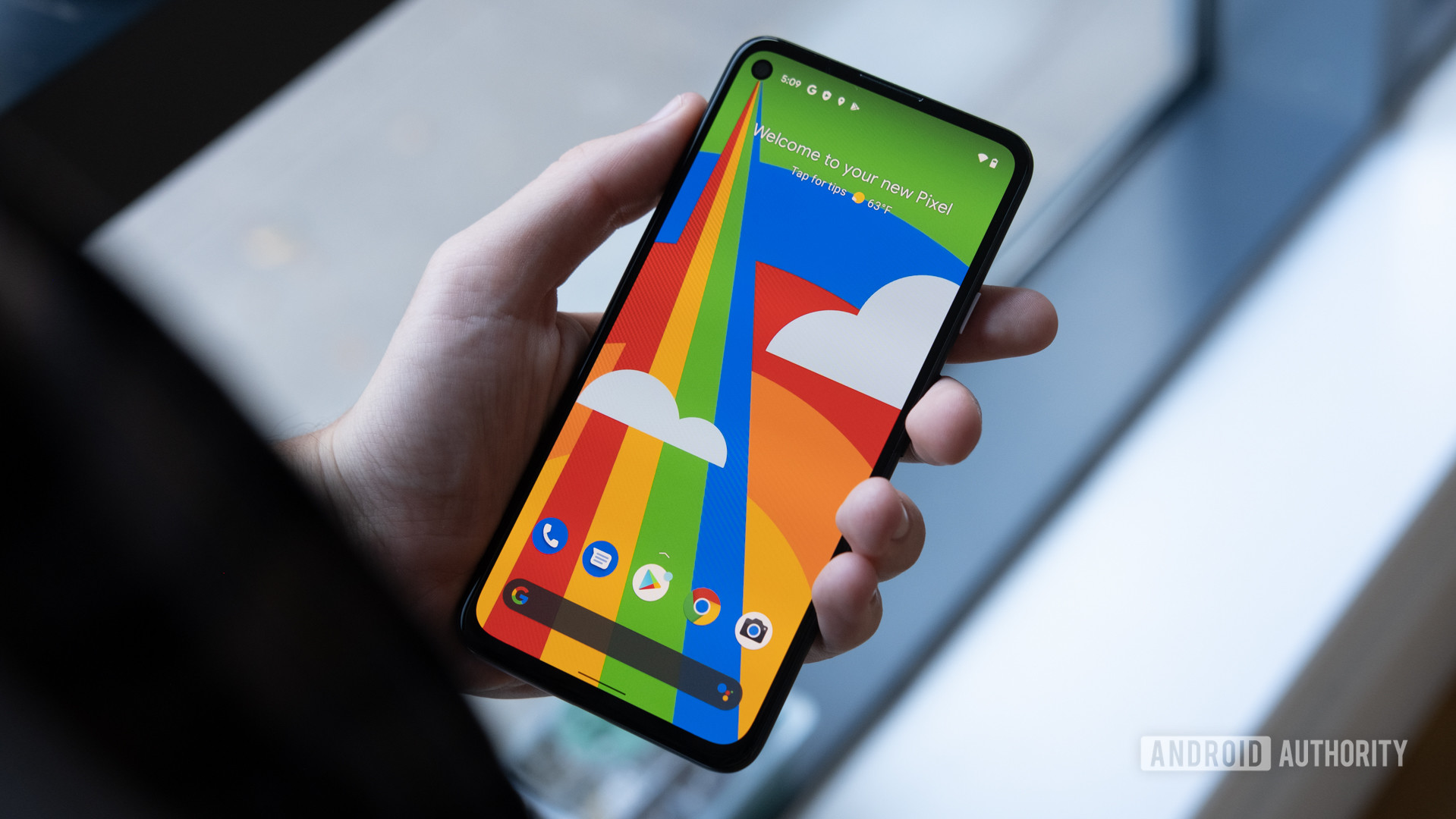
- 6.2-inch OLED with punch-hole
- 2,340 x 1,080 resolution
- 413ppi
- 19.5:9 aspect ratio
Google seems to have an aversion to anything but amazing OLED panels these days, so it’s no surprise that the Pixel 4a 5G’s 6.2-inch OLED display is top class. The overall pixels per inch total comes out slightly lower than the regular Pixel 4a, but still falls well within the resolution sweet spot for a display this size.
While it’s not the brightest display available, it manages just fine on a bright sunny day. Color balance is spot on, which is good because Google still doesn’t let you fine-tune the temperature or contrast beyond three presets — Natural, Boosted, and Adaptive — which all look very similar.
The punchy panel is only let down by the 60Hz-locked refresh rate.
Like the rest of Google’s 2020 phones, the Pixel 4a 5G has a punch-hole display, or as Google calls it a “transmissive hole.” Weird naming aside, the punch-hole is innocuous enough nestled away in the top left corner. You’ll only really notice it when playing a game or streaming certain types of video. It’s far from intrusive. Props to Google for also including some inventive, colorful, and downright bizarre punch-hole-hiding stock wallpapers. These are the same wallpapers as the Google Pixel 5 and are appropriately filed under For Fun because that’s exactly what they are. Google has continued to add more wallpapers in Pixel Feature Drops too.
Unfortunately, the Pixel 4a 5G’s display has one glaring downside — the refresh rate is locked at 60Hz. This was understandable for the Pixel 4a, but the Pixel 4a 5G competes at a level where 90Hz is the new standard. If you’ve tried out a higher refresh rate display you can immediately feel the drop in animation speed and smoothness when navigating the UI.
If you can live with 60Hz, however, the Pixel 4a 5G display is another punchy, vibrant panel from Google.
Performance: More than good enough
- Qualcomm Snapdragon 765G
- Adreno 620
- 6GB RAM
- 128GB storage
So far so Pixel 4a, only with some extra tweaks. So where does the extra value come from with the Pixel 4a 5G?
First off, the processor. The Pixel 4a 5G shoots quite a bit higher and packs the ubiquitous Qualcomm Snapdragon 765G SoC — the same chipset that powers the OnePlus Nord, LG Velvet, and, most notably, Google’s own flagship, the Pixel 5.
We’ve tested the Snapdragon 765G extensively here at Android Authority. The Pixel 4a 5G doesn’t deviate from our findings so far. In real-world use, the Snapdragon 765G breezes through everything you can throw at it with no sign of any lag or stuttering. Even more demanding tasks like gaming are smooth and hiccup-free for less demanding Play Store titles like Brawl Stars or Stardew Valley.
The Adreno 620 GPU does start to buckle for more intensive 3D games. Genshin Impact was more than playable on the Pixel 4a 5G, but suffered from occasional frame rate drops in action-heavy scenes. You shouldn’t buy this phone if you want peak gaming performance on a smartphone. However, it’s perfectly passable for a quick game on the go. Plus, you’ve always got Google Stadia, which is capable of streaming over 5G or Wi-Fi on the Pixel 4a 5G.
In terms of benchmarking, the Pixel 4a 5G sits somewhere between Qualcomm’s 800 series silicon from 2018 and 2019 for raw computing power and behind the Snapdragon 845 for the GPU. The phone also manages to keep very cool even under heavy stress.
While it’s not winning any benchmark races, the Snapdragon 765G is an impressively equipped processor that does everything Google needs it to. On the networking side, the phone supports sub-6GHz frequencies for 5G data via an integrated X52 modem. This sacrifices a bit of peak speed potential for greater power efficiency when compared to the bleeding edge Snapdragon 888 series’ X60 modem. The mmWave-compatible variant is exclusive to Verizon.
The Snapdragon 765G also boasts Qualcomm’s Computer Vision ISP technology and has been optimized to achieve the same camera processing performance as the Pixel 4 series without the need for the Pixel Neural Core. Having switched from a Pixel 4 XL to the Pixel 4a 5G for this review, I didn’t spot any major image processing delays.
Outside the chipset, the Pixel 4a 5G matches up closely with the vanilla Pixel 4a. It sports 6GB of RAM and 128GB of non-expandable storage and that’s the only SKU available. Google has historically dropped the ball here, but the Pixel 4a 5G meets the bar without surpassing it. I didn’t notice any apps closing in the background and while a 256GB variant would’ve been nice for all those 4K 60fps videos, 128GB is a reasonable total that can be complimented with Google One cloud storage.
The only real downsides are the lack of Wi-Fi 6 support and the use of UFS 2.1 storage over the much faster UFS 3.0. These are both slight knocks against the phone’s future-proofing, but these features are fairly rare across mid-rangers.
Battery: Extremely good
- 3,885mAh battery
- 18W USB Power Delivery
Long the Achillies Heel of the Pixel family, I’m pleased to report that battery life on the Pixel 4a 5G is good. In fact, it’s great. Really great.
It doesn’t have the largest battery you can get at this price, but size isn’t everything. The power-efficient Snapdragon 765G is doing work here, with the Pixel 4a 5G easily hitting two full days on a light load or a day and a half under heavy use.
The Pixel 4a 5G managed just over six hours of screen on time on a single charge despite me streaming over an hour of Spotify, over half an hour of YouTube, and playing a few games here and there. This could easily stretch to seven for lighter usage. In fact, in our stress testing, it managed to hit 347 minutes on a constant test loop. That’s a chart-topping performance.
The Pixel line's historical battery woes aren't a problem for the Pixel 4a 5G.
You can extend the battery life even further with a new software feature called Extreme Battery Saver, which disables access to non-essential apps and services to preserve battery life. Modes like this have been around for ages, but it’s good to see it finally become part of the Pixel experience.
Accessing the mode itself is a bit finicky. You first have to enable regular Battery Saver in Quick Settings and then tap a notification in your notification bar. You can bypass this by making the regular Battery Saver always default to Extreme Battery Saver.
In an update in December, Google added another handy battery feature called Adaptive Charging. This dynamically throttles the charging speed overnight to prolong the phone’s battery life.
The Pixel 4a 5G supports up to 18W charging which took the battery from zero to just over 40% in half an hour during my tests. A full charge averaged at ~90 minutes. These aren’t terrible numbers, but they’re nothing special either. Unlike the Pixel 5, the Pixel 4a 5G does not support wireless charging or reverse wireless charging.
Camera: Pixel imperfection
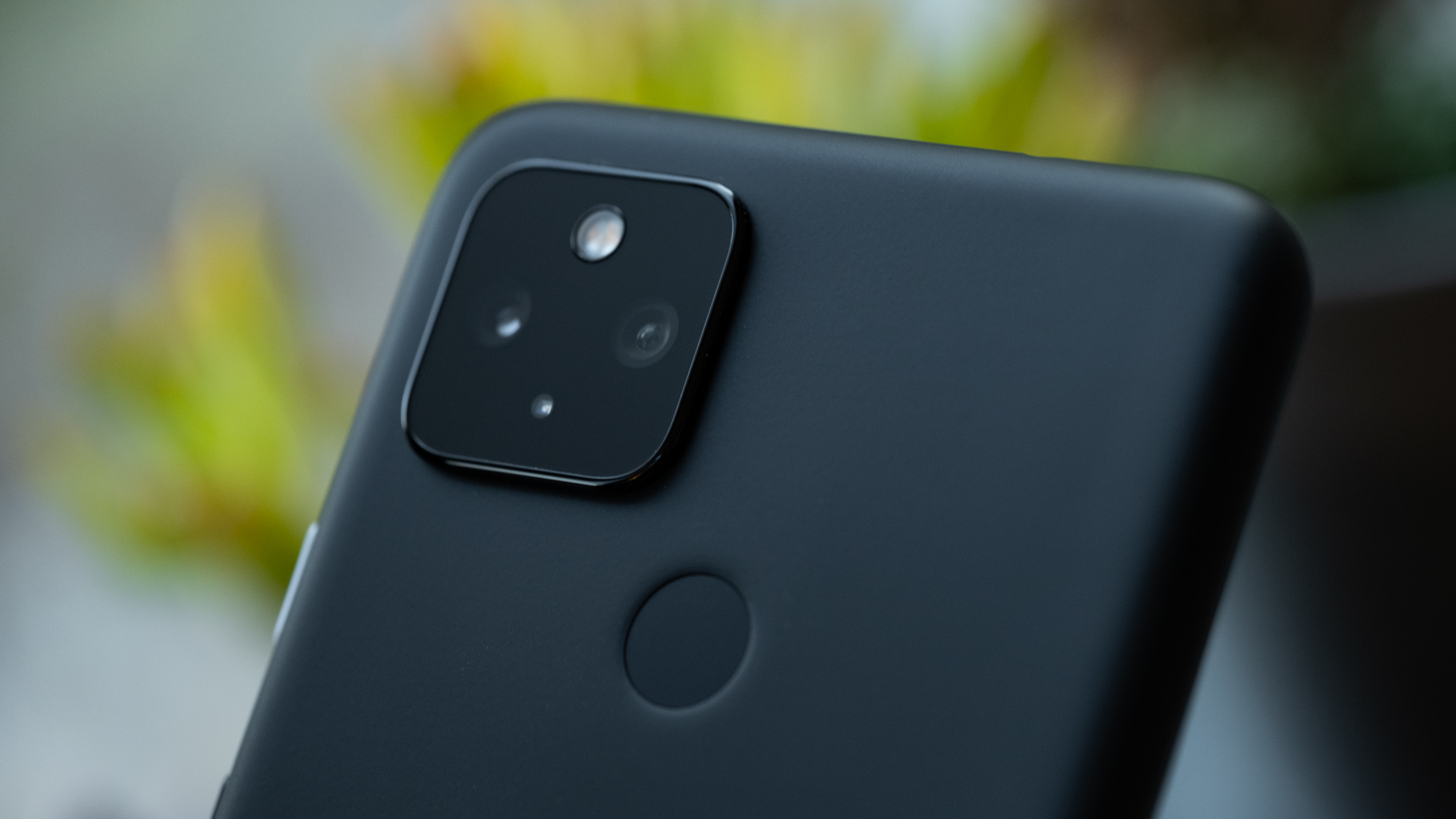
- 12.2MP dual-pixel OIS EIS PDAF (ƒ/1.7, 1.4μm)
- 16MP ultra-wide (ƒ/2.2, 1.0μm, 107-degree FOV)
- Front: 8MP (ƒ/2.0, 1.12μm)
- Video: 4K at 60fps, 1080p at 240fps
Be honest — This is the part you really care about, right?
The Google Pixel 4a 5G sports the same 12.2MP Sony IMX363 primary camera we saw on every Pixel phone from the Pixel 3 series, before the Pixel 6 finally pushed up the megapixel count and sensor size. While there were minor hardware tweaks, Google mostly chose instead to leverage its computational photography smarts to improve image quality for each new Pixel generation prior to this. This software-led approach has also enabled features like Super Res Zoom, Night Sight, dual exposure sliders, and astrophotography.
The best part about Google’s approach to phone cameras is that the Pixel “a” family gets the same treatment as its flagships. This was true of the Pixel 4a, but the Pixel 4a 5G goes one better and matches the Pixel 5 by adding a secondary ultra-wide shooter. Put simply, this is Google’s top camera offering in a mid-range phone.
The primary camera is business as usual for a Pixel phone. That means sharp and accurate colors, wide dynamic range, and near-flawless exposure. Google’s auto HDR is still arguably the best in the business too. As far as point-and-shoot cameras go, there’s nothing in the Pixel 4a 5G’s price range that can match it except for Google’s own Pixel 4a.
However, there’s only so much Google can do with aging hardware, a low megapixel count, and a relatively small sensor. This inadequacy is exposed the most in the finer details where textures start to get a little mushy, especially if you crop into the photos or blow them up on a larger screen. The Pixel 4a 5G also adds some unnatural oversharpening to compensate on occasion.
For zoom, the Pixel 4a 5G lacks a dedicated telephoto camera so Super Res Zoom has a lot of work to do to rival optical lenses. It does a fairly good job of retaining overall quality, though anything past 3x turns into pixelated mush.
The 16MP ultra-wide camera is a brand new addition to the Pixel lineage and a much-requested one after it was skipped over for the Pixel 4. Those hoping for some bewildering Google wizardry that redefines the ultra-wide camera may feel short-changed.
For starters, the 107-degree field of view is fairly narrow compared to competitors. Meanwhile, although the white balance and dynamic range are all comparable with the main shooter, the colors are muted. There’s a lack of sharpness that’s visible without any cropping whatsoever. The results aren’t poor by any means and Google’s HDR processing adds some welcome punch, but it’s disappointing considering the company’s pedigree.
Portrait mode across both the main rear camera and selfie camera delivers the same great bokeh shots of any Pixel phone, though the edge detection can flub some thin fibers or straggled hair. Google has also added a new feature called Portrait Light to enhance lighting on faces or in shadows. This is always-on for new photos but can be applied retroactively to older portrait shots in Google Photos. The selfie camera itself is a decent 8MP affair with some subtle and optional beauty effects.
Low light performance is pretty great. Noise is an inevitability, but shots taken in the regular mode or using the always-impressive Night Sight are rarely, if ever, unusable.
Google has also made some notable changes to the Pixel Camera app for its 5G phones. The best addition is an auto-detect button for Night Sight that can be switched on and off from the main camera mode. Now you won’t miss out on great low light shots because you forgot which way to move the slider. Initially, this feature did have a slight annoyance in that it would always revert to auto after opening and closing the app, even if you turned it off. Thankfully, this was adjusted in an update in January 2021 to remember your preferences.
Another very welcome inclusion is a set of quick toggles for easy switching between ultra-wide, the standard camera, and 2x zoom. The Slow Motion and Time Lapse modes get their own toggles in video mode too. The More tab is now reserved for just the Panorama, Photo Sphere, and Google Lens modes.
Overall, the app is a minimalist affair that keeps things simple and intuitive.
The Pixel 4a 5G sees Google finally catch up with the competition with support for 4K video at 60fps through the main camera (the ultra-wide is locked at 4K 30fps) The quality is crisp and smooth, but the real standout is Google’s stabilization. There are four options to choose from — Standard for more natural, steady footage, Locked for a tripod-like zoom, Active for all-action clips, and Cinematic Pan for, well, cinematic panning. These are all great fun to experiment with and are indicative of a much-improved approach to video from the Big G.
Read more: The best budget camera phones you can buy
Google’s reputation precedes itself with smartphone cameras. Even when Pixels have made missteps elsewhere, the camera has always been untouchable. That’s not completely the case here. The long-awaited ultra-wide camera arrives with a whimper instead of the expected bang. Nevertheless, taken as a complete package the photography and now video experience with the Pixel 4a 5G is leaps beyond anything else you’d find below $500.
You can check out the full-resolution camera samples in this Google Drive folder.
Software: The Google way
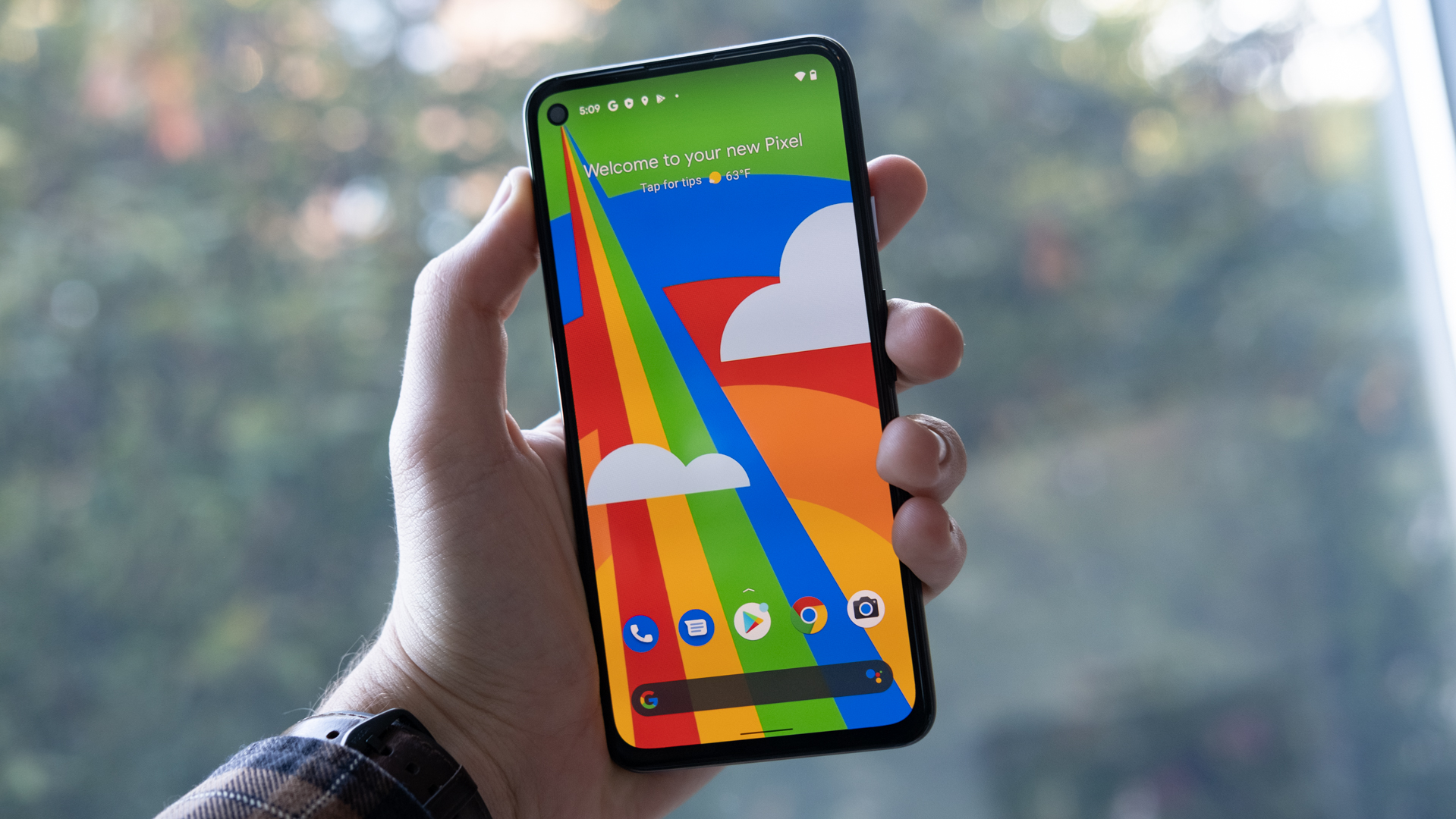
- Android 11 (update to Android 12 available)
The Pixel 4a 5G delivers the same clean and concise software experience that has long-defined Google’s approach to Android.
Zero bloatware, logical menu trees, and neat animations come together with quick and easy access to Assistant and a wealth of Google apps and services in a cohesive UX. If you want a heavily customizable take on Android, this isn’t it. If you’re craving an almost iOS-like singular vision for software then Google’s Pixels are peerless.
The Pixel series enjoys a number of exclusive features over other Android smartphones. In addition to the aforementioned Extreme Battery Saver, the Pixel class of 2020 also introduces some welcome tweaks to the already wonderful Recorder app and Hold for Me — the latest in Google’s streak of Duplex-powered features intended to make phone calls to/from business less of a painful experience.
Hold for Me does exactly what its name implies. When you’re put on hold the Pixel 4a 5G can wait on the line while you do other things and alert you when someone picks up. Unfortunately, I couldn’t test this as it’s unavailable in the UK.
Between the exclusive features, all the new stuff in Android 11, and old favorites like the Discover feed, Now Playing, and much more, there’s still something special about Google’s purist approach to Android. Plus, the Pixel 4a 5G will stay fresh for a while thanks to Google’s Feature Drops and three years of promised OS upgrades and security patches.
Pixel software is as good as Android gets.
The fact that it all runs as beautifully as ever even without the Pixel 4’s Neural Core is a testament to how much Google has managed to do with the Snapdragon 765G.
The only real sour note is that despite having the smartest version of Google Assistant, the Pixel 4a 5G doesn’t have Active Edge. I loved the squeeze-to-summon feature on the Pixel 4 series. However, it appears Google is abandoning it completely as no Pixel phone since the Pixel 4 series has supported it. Boo.
The Pixel 4a 5G has already received its Android 12 update, along with the rest of Google’s devices. It brings a whole slate of new Material You customizations, including revamped widgets and color-matching app icons. Google has promised to support the Pixel 4a 5G up until November 2023, which will coincide with the launch of Android 14.
Specs
| Pixel 4a 5G | |
|---|---|
Display | 6.2-inch OLED 2,340 x 1,080 resolution 60Hz refresh rate Gorilla Glass 3 |
Processor | Qualcomm Snapdragon 765G 2.4 GHz + 2.2 GHz + 1.8 GHz, 64-bit Adreno 620 Titan M Security Module |
RAM | 6GB |
Storage | 128GB no microSD card slot |
Camera | Main: 12.2 MP dual-pixel 1.4 μm pixel width Autofocus with dual pixel phase detection Optical + electronic image stabilization ƒ/1.7 aperture 77° field of view Secondary: 16 MP ultrawide 1.0 μm pixel width ƒ/2.2 aperture 107° field of view Front: 8MP sensor, f/2.0, 1.12µm pixels, fixed focus, 83-degree field-of-view |
Battery | 3,800mAh USB-C USB-PD 2.0 18W fast charging No wireless charging |
Headphone port | Yes |
Software | Android 11 Minimum 3 years of OS and security updates |
Dimensions and weight | 153.9mm x 74mm x 8.2mm (8.5mm for mmWave variant) 168g (171g for mmWave variant) |
Price | $499 |
Colors | Just Black, Clearly White |
Value and the competition
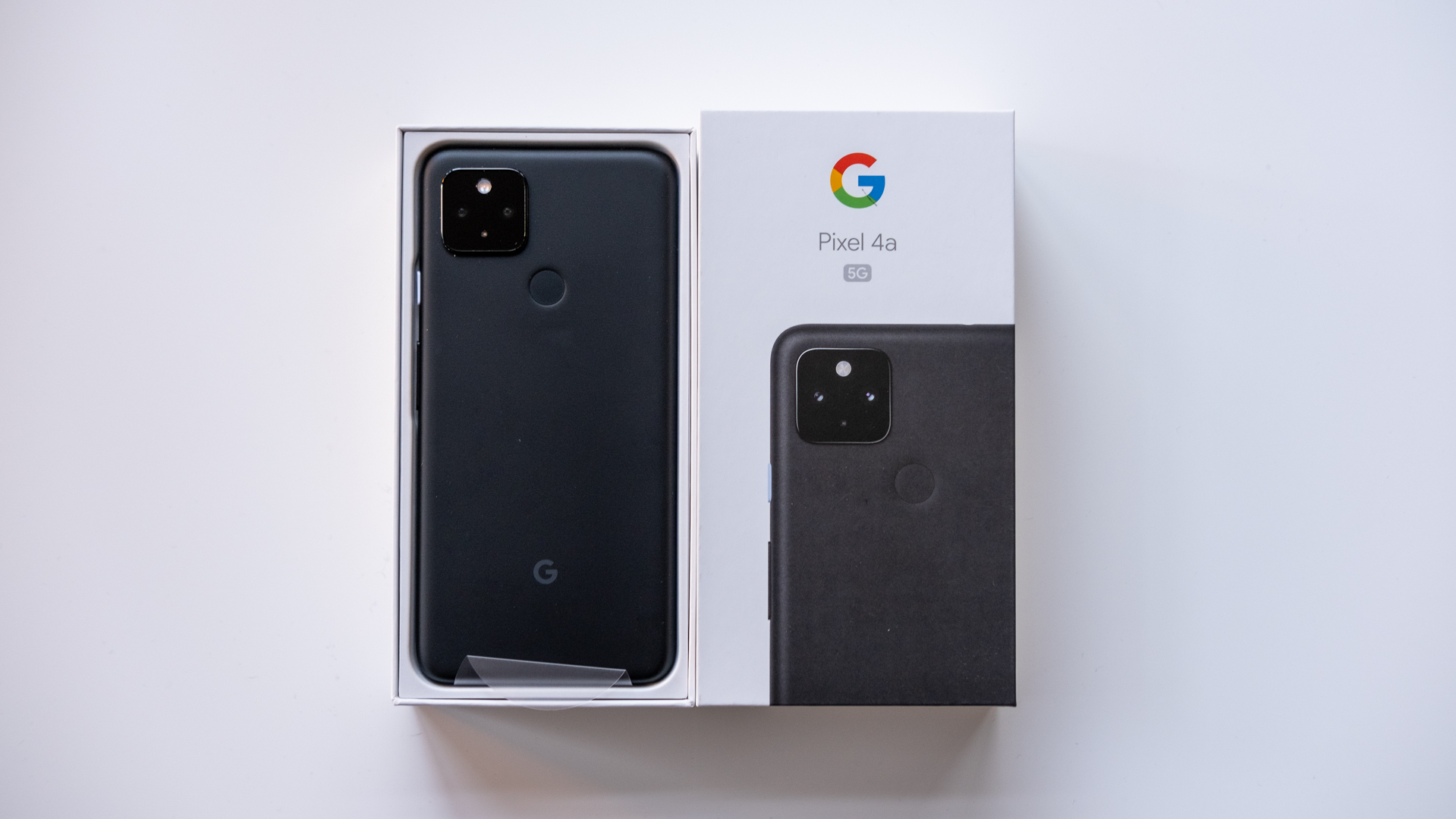
- Google Pixel 4a 5G (6GB/128GB) — $499/£499/€499
The Google Pixel 4a launched in the US and UK as well as other selected markets in November 2020. A Clearly White version with mmWave 5G support was available exclusively through Verizon priced at $599. The Pixel 4a 5G was a great deal in every region, but in the US it was an absolute steal.
The Pixel 4a 5G’s greatest rival is Google’s own Pixel 5a ($449). It’s nearly identical on the inside, with a Snapdragon 765G chip onboard. However, it adds an IP67 rating to the mix with more durable aluminum construction. Google’s Pixel 5a is slightly larger at 6.34 inches, but the camera setup is the same as you’ll find on the Pixel 4a 5G. It’s cheaper too! Sadly, though, the Pixel 5a is only available in the US and Japan (via the Google Store). Most other regions are stuck with the still-solid but under-spec’d Pixel 4a and the hugely upgraded, but pricier Pixel 6 ($599) line.
For camera fans that don’t want to stick with Google, there’s only real competition from the iPhone SE if you favor image quality over versatility. However, while Apple’s budget iPhone also has a super-charged processor, it lacks 5G, has a 720p display, a dated design, and half the storage as standard. The Galaxy A52 5G ($499) is another fair contender, though it’s even less powerful than Google’s phone.
Read more: Google Pixel 4a 5G alternatives
For those outside the US, the OnePlus Nord 2’s £399 price tag undercuts the Pixel 4a 5G by a good margin. It also has a 90Hz refresh rate, more RAM, 65W charging, a MediaTek Dimensity 1200 chipset, and four cameras. The Nord 2’s cameras didn’t wow us at all, but those that don’t care about photography will want to consider OnePlus’ budget phone. A few “flagship killers” like the POCO F3 also creep into contention.

Google Pixel 4a 5G review: The verdict
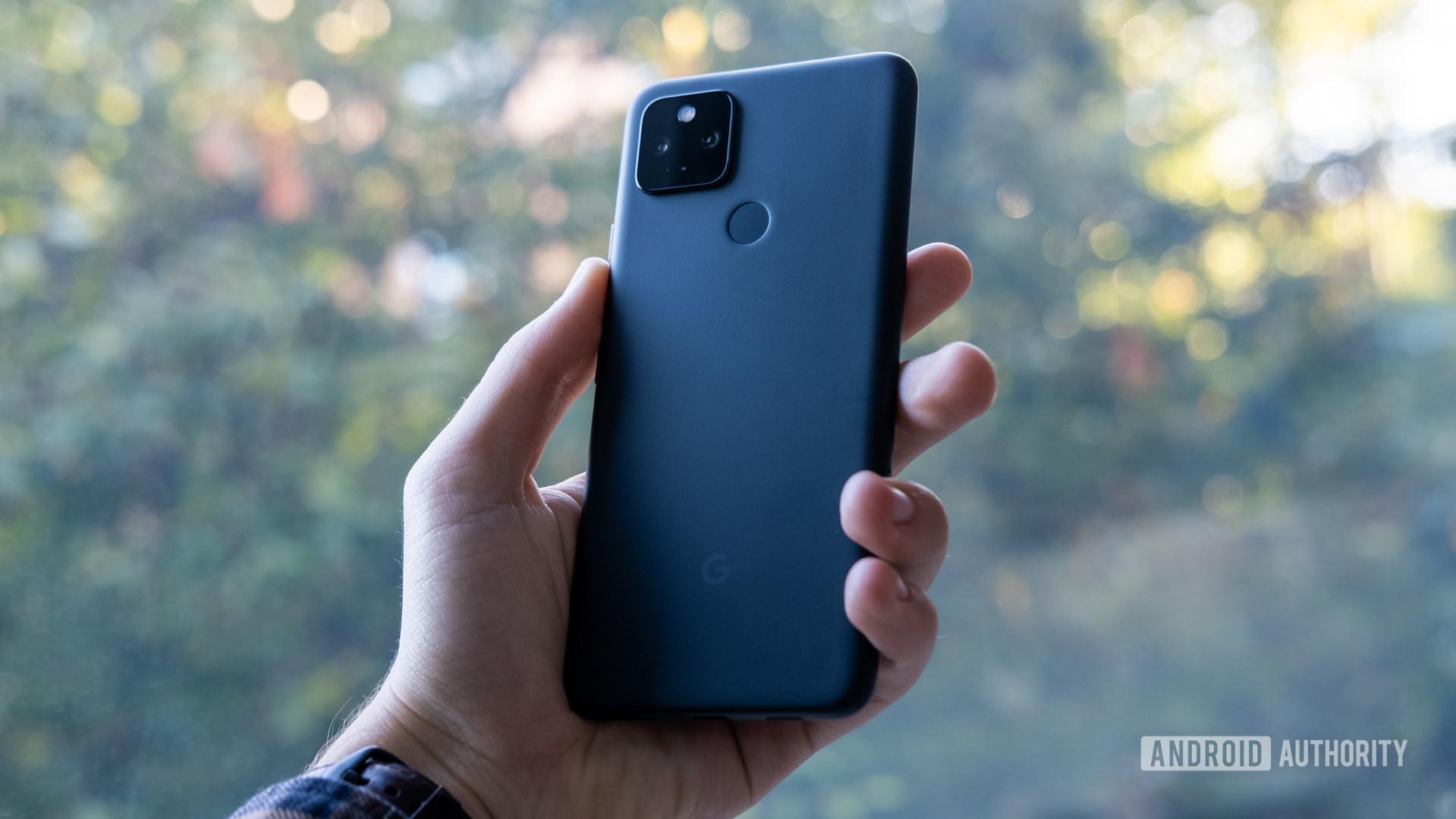
The Pixel 4a 5G is a great phone that risked being drowned out as a result of poor branding. 5G is still in its infancy and adding it as a suffix on a phone’s moniker was a lame marketing tactic. Google should’ve known better, but thankfully the Pixel 4a 5G was well regarded while it was on sale.
While 5G support is welcome, the Pixel 4a 5G’s excellence lies elsewhere. This is a phone that’s barely more expensive than the Google Pixel 3a XL was at launch and it’s leaps and bounds ahead of Google’s last larger-sized budget phone.
The Pixel 4a 5G is one of the best phones Google has ever made.
Concessions had to be made to hit a sub-$500 price, but almost all of the trade-offs are justifiable. The main exception is the 60Hz display. While wireless charging, water resistance, and premium materials are all “flagship” features, the lack of a 90Hz refresh rate feels arbitrary.
Read next: Google buyer’s guide — everything you need to know about Google hardware
The positives outweigh any gripes, however. There are the expected highs. The software is the best Android offers, while the camera wipes the floor with other rivals in the price tier. But there are also the little extras that make the Pixel 4a 5G feel special. Those include the comprehensive audio suite, the pleasing haptics, and the Pixel exclusive apps and services.
Of course, the Pixel 4a 5G is no longer available to buy, and has since been replaced by the Pixel 5a in the US — a minor upgrade over the Pixel 4a 5G, but cheaper and offering better battery life and an IP rating. For those in other markets, the Pixel 6 isn’t a huge leap up and price and represents another vast jump in specs.
However, looking back, 2020 was a turbulent 12 months for Google with the premature end of the Pixel 4 series and lengthy delays for the Pixel 4a. But the Pixel 4a 5G wasn’t just a bright spot in a tough calendar year. It was and still is one of the best phones Google has ever produced.
That’s a wrap on our Google Pixel 4a 5G review. What do you think of Google’s mid-range 5G phone?